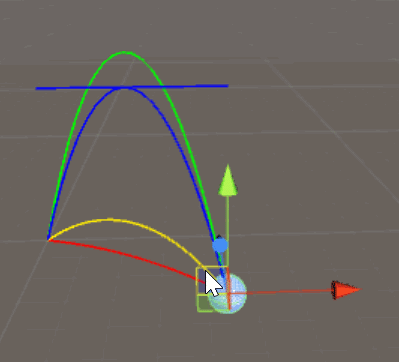Estoy tratando de lanzar un objeto a un objetivo, dada su posición, su posición de destino, la velocidad de lanzamiento y la gravedad. Estoy siguiendo esta fórmula de Wikipedia :
Simplifiqué el código lo mejor que pude, pero todavía no puedo alcanzar el objetivo. Solo estoy considerando la trayectoria más alta, de los dos disponibles de la opción + - en la fórmula.
¿Alguien sabe lo que estoy haciendo mal?
using UnityEngine;
public class Launcher : MonoBehaviour
{
public float speed = 10.0f;
void Start()
{
Launch(GameObject.Find("Target").transform);
}
public void Launch(Transform target)
{
float angle = GetAngle(transform.position, target.position, speed, -Physics2D.gravity.y);
var forceToAdd = new Vector2(Mathf.Cos(angle), Mathf.Sin(angle)) * speed;
GetComponent<Rigidbody2D>().AddForce(forceToAdd, ForceMode2D.Impulse);
}
private float GetAngle(Vector2 origin, Vector2 destination, float speed, float gravity)
{
float angle = 0.0f;
//Labeling variables to match formula
float x = Mathf.Abs(destination.x - origin.x);
float y = Mathf.Abs(destination.y - origin.y);
float v = speed;
float g = gravity;
//Formula seen above
float valueToBeSquareRooted = Mathf.Pow(v, 4) - g * (g * Mathf.Pow(x, 2) + 2 * y * Mathf.Pow(v, 2));
if (valueToBeSquareRooted >= 0)
{
angle = Mathf.Atan((Mathf.Pow(v, 2) + Mathf.Sqrt(valueToBeSquareRooted)) / g * x);
}
else
{
//Destination is out of range
}
return angle;
}
}
